
For a while now Iíve been thinking of upgrading the SS with a cam.† The reports of the huge power possibilities were getting to me and as time went on, the temptation to do something grew.† While I havenít decided on the cam yet, I had to do something.† It was a very nice day and I had a couple of hours to spare so I thought a 2 hole mod was just right.
I had already removed the std. 90í intake pipe that runs from the air cleaner to the radiator cover.† While it was better than the one I had in the VX, it still appeared to be a significant restriction.† In its place I fitted a short 90mm ram tube.† This fitted perfectly into the original filter box hole and removed the 90í turn and restrictive mouth of the std, pipe.† This is what it looked like after the initial work.

As can be seen, there is very little room for the 2 hole mod.† Holden decided that the space in front of the air cleaner was best suited to put the coolant over flow thank in there.† To make things worse, they extended the filler tube all the way up to the radiator cover, right where the second hole for the air cleaner needs to go.
There is a small amount of room there though, so I figured a very short ram tube should fit.† In this case, short means about 5cm.† The first task is to remove the air cleaner from the car. † This is a pretty straight forward job and can be done with 2 screwdrivers, one flat and one Philips head.† Iím not going into that here, but itís pretty easy.† The final step of pulling the base out after the top and filter have been removed is easy.† Just pull gently and† firmly straight up, itís held in place by 3 rubber grommets.

With the filter box removed you can see again how close the coolant filler is.† The small black ring just next to it is one of the rubber grommets from the filter box, thereís another to the right.† Point to note here, itís easier to replace the filter box with the grommets in place in the box, not where these ones are.

No real reason for this, just in case someone wanted to see the inside of the MAF.† As you can see, the mesh is a large restriction in itís self.† The MAF measures air temp and density and is used to ďfine tuneĒ the engines air/fuel ratio.† The mesh is actually just there to stop any debris in the air flow from damaging the actual sensors which are very fine wires.† Some people remove the mesh and risk damaging the sensors, but if you are careful, the risk should be minimal.† Others remove it all together and go with a mafless tune.† Iím leaving it stock for now.

As you can see Iíve already checked to see how the 2nd hole will fit.† Given the neatness of the first ram tube, I decided to go with another 90mm hole. † It will just fit between the reinforcing gussets and the side of the box.† The hole will sit very high though, meaning the top section will be masked by the actual filter, but given the size of the hole it shouldnít effect it much.

Following the age old rule of measuring twice and cutting once, I placed a piece of 90mm pipe where I thought it should go and drew around it with a scribe.† It looked pretty good and given I didnít actually measure anything, I only did it once. † I had a couple of options to cut the holeÖ
I went the series of hole method.† Itís fast and the cleanup afterwards is easy with the soft plastic.

Here I am at the half way mark. † Actually it was going so well I almost forgot to stop and take the shot.† Oh yeah, the kids got chalk for Christmas.


All done and the last bits of plastic cut. † As you can see the hole looks pretty rough and needs cleaning up.† To do this I wrapped some 100 grade cloth backed sand paper around a 60mm tube. † Then just rubbed down the hogh spots until the 90mm tube fitted in snugly.

Came up pretty good I think. † almost looks like a professional jobÖÖ.. † And how does the tube fit ?

perfectly !!!† Itís a snug fit and would probably hold in place with nothing else helping. † Iíll be using a spot or two of glue to help keep it in place, just to be sure.

This is an inside job as Iíll need to heat the tube to create the flared end.† First I sanded the end to make sure it was flat.† Then gave it a once over to clean off any dirt.† To make the flange I needed something to form it on.
Amazing as it may seem, I donít own a ram tube mould so I had to improvise.† My tool of choiceÖ.
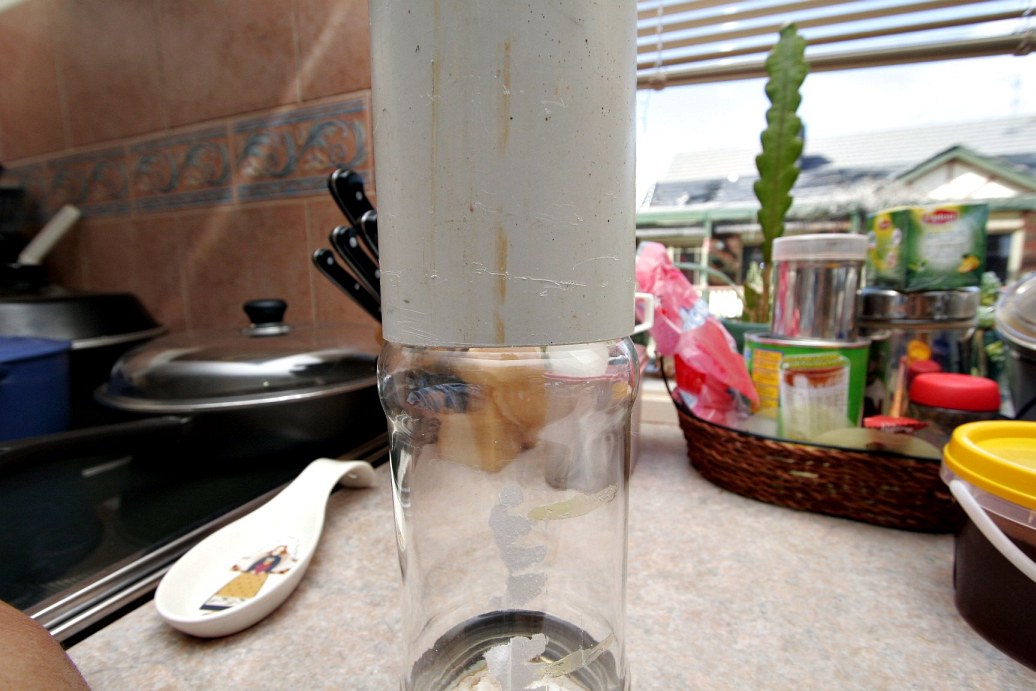
A Nescafe coffee jar.† Itís a bit bigger than the 90mm pipe and has a nice chamfered edge to make the flange on the ram tube.† To bend the tube I heated it over the gas stove.† This needs to be done gently so as not to burn the plastic. † To do this I held it about 5 cm above the flame and rotated it to heat it all the way around. † Once it was soft I pushed it over the end of the jar.
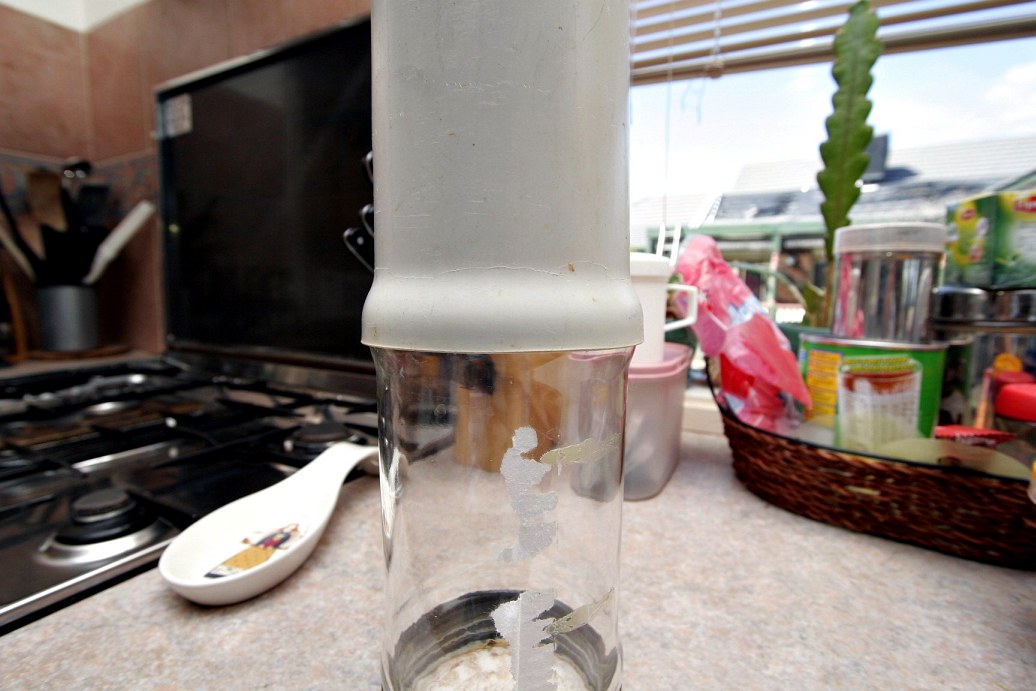
Here is the first step.† The plastic cools fairly quickly so a reheat we need to finish it off.† After some more stove work I just pressed the tube on the bench top to complete the flange.
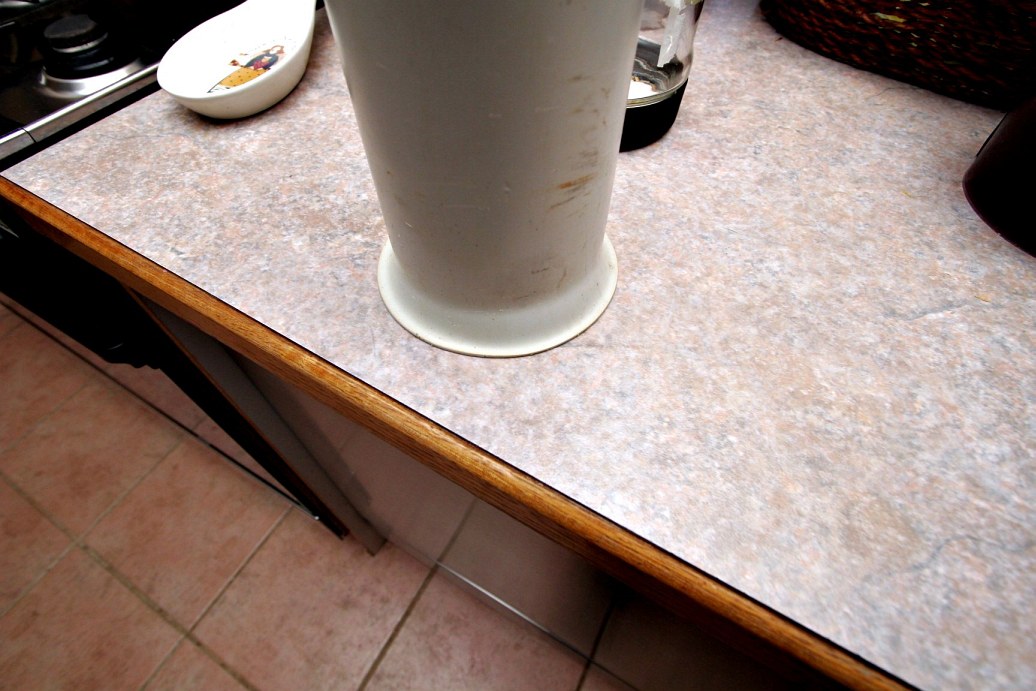
Holding it in place for about a minute let it cool enough to become solid again.† After the moulding, it looked like thisÖ
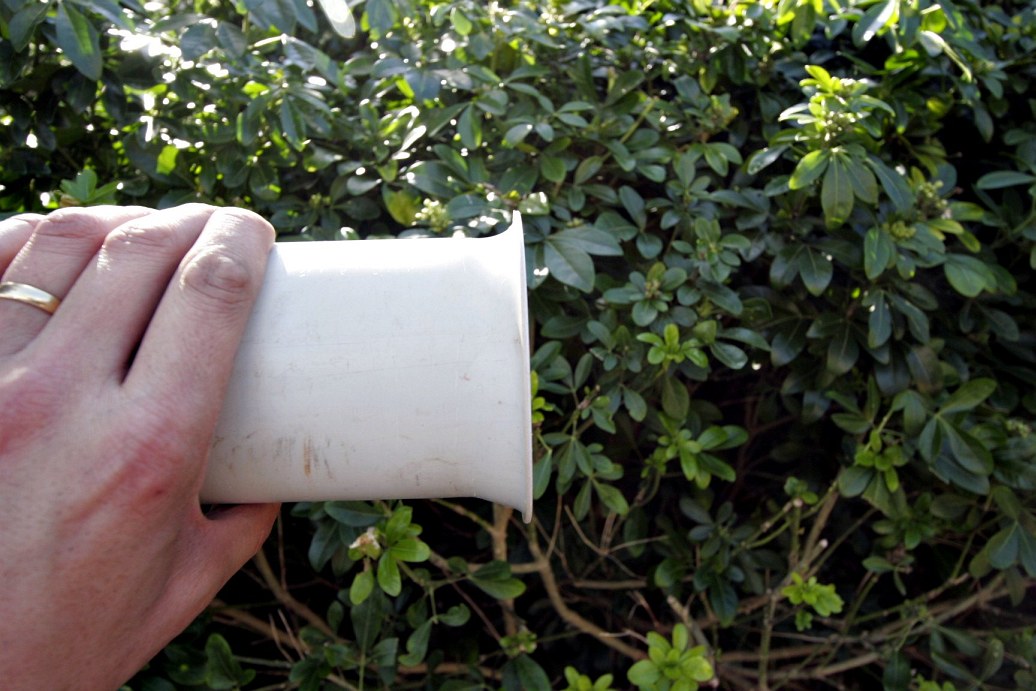
Of course itís still too long so I needed to cut it down to about 5cm.† After cutting it and cleaning up the ends, it was time for a trial fitÖ
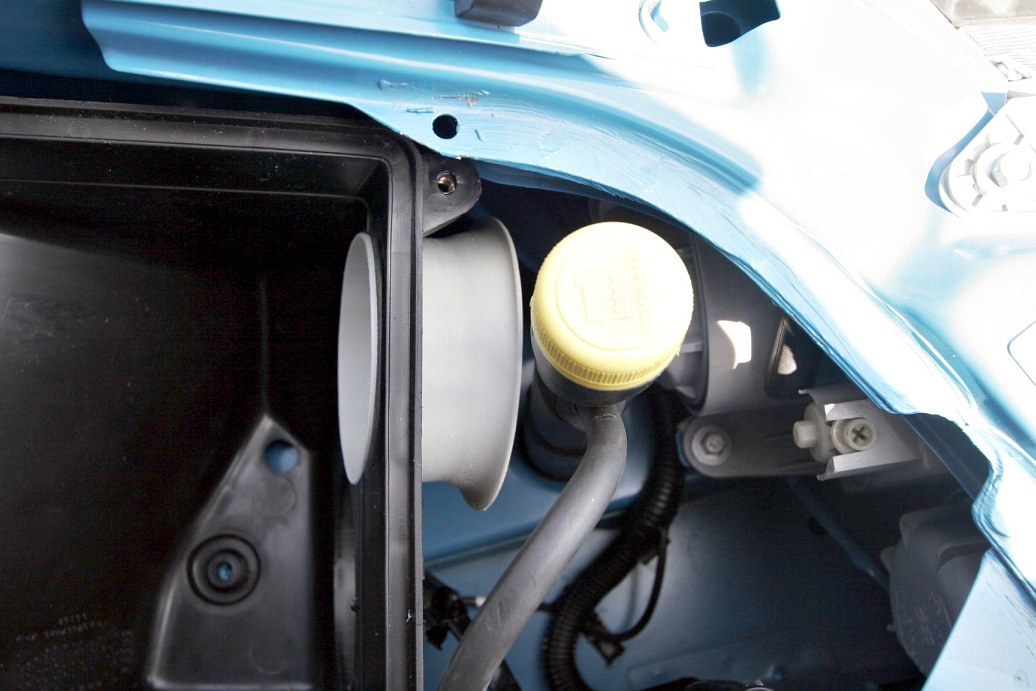
Fits well, but there is one problem. † Because the two tubes are so close together, the flange on the new ram tube will foul against the original one. † This is how it looks head onÖ.
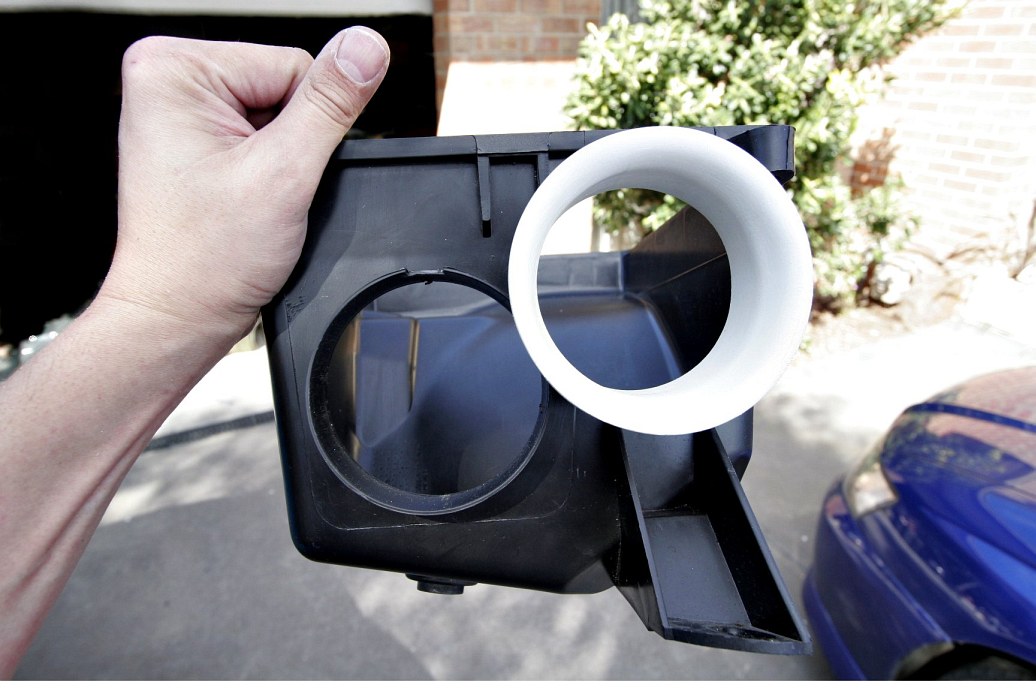
To make it fit I went back to the 100 grit sand paper. † This time it was wrapped around some 90mm pipe and the edge of the flange was rubbed down so it cleared the original tube.† After sanding, this is how the fit lookedÖ
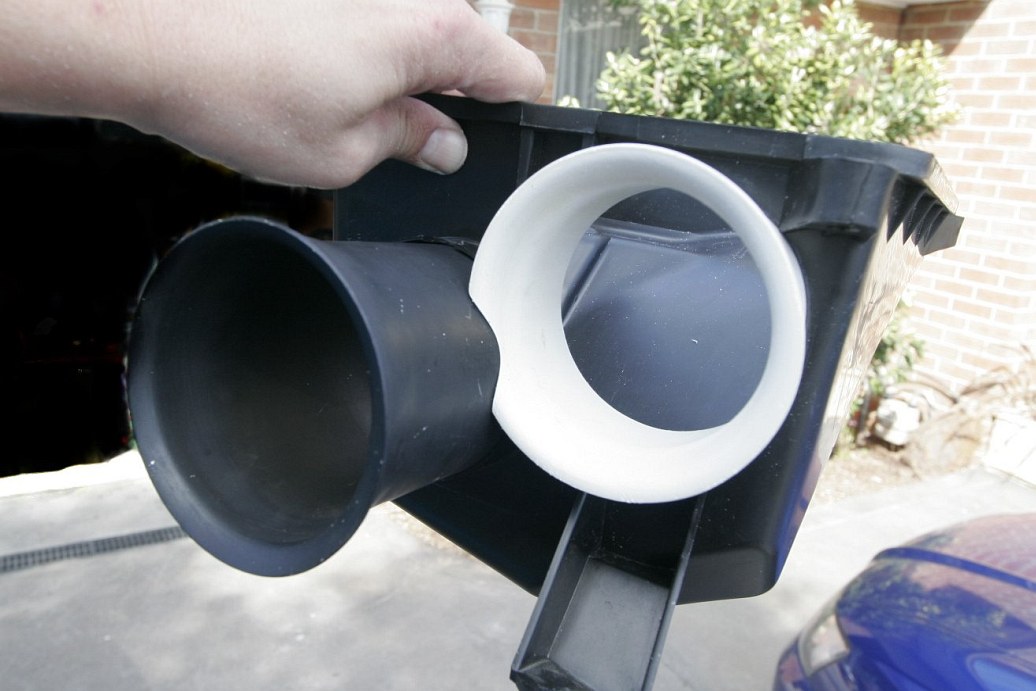
So now that everything fitted well, it was time to paint the new tube.† In the quest for excellence I gave it a quick rub down with the same 100 grit paper (yes itís much too rough but it was on hand).† Then a quick spray with matt black and leave it in the sun to dry.
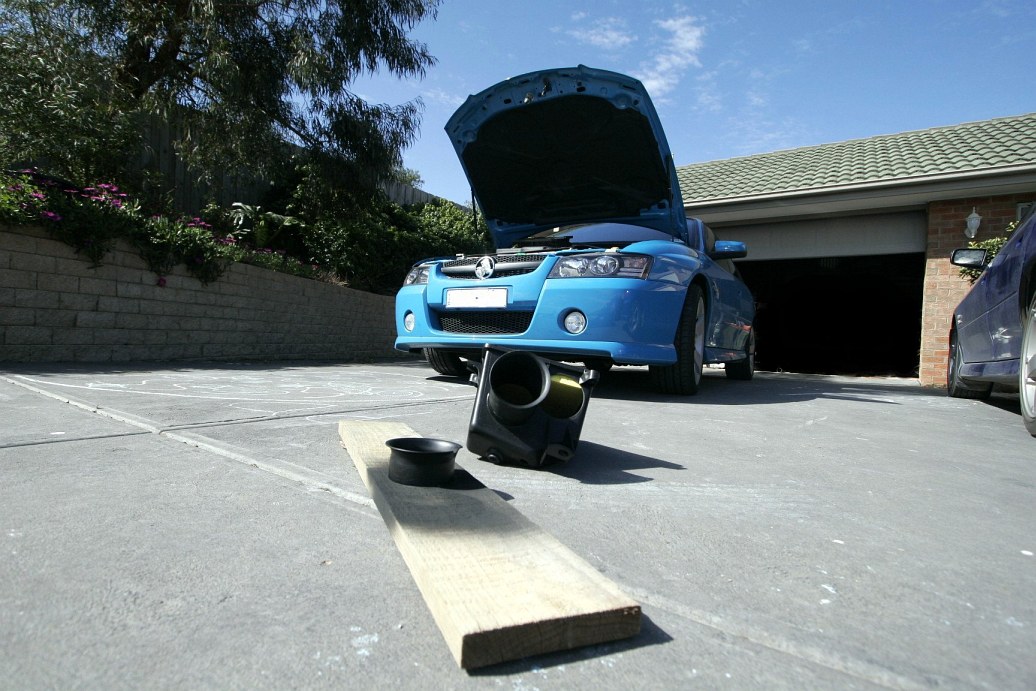
Here are the bits waiting to go back into the car. † You can see the filter showing through the new hole.

Hereís a close up, the seal for the filter runs around the top of the filter box so thereís no chance of dirty air getting past due to the new hole.† Time to put the new ram tube in place and fix it there.† I ended up using a few spots of ďblue glueĒ.
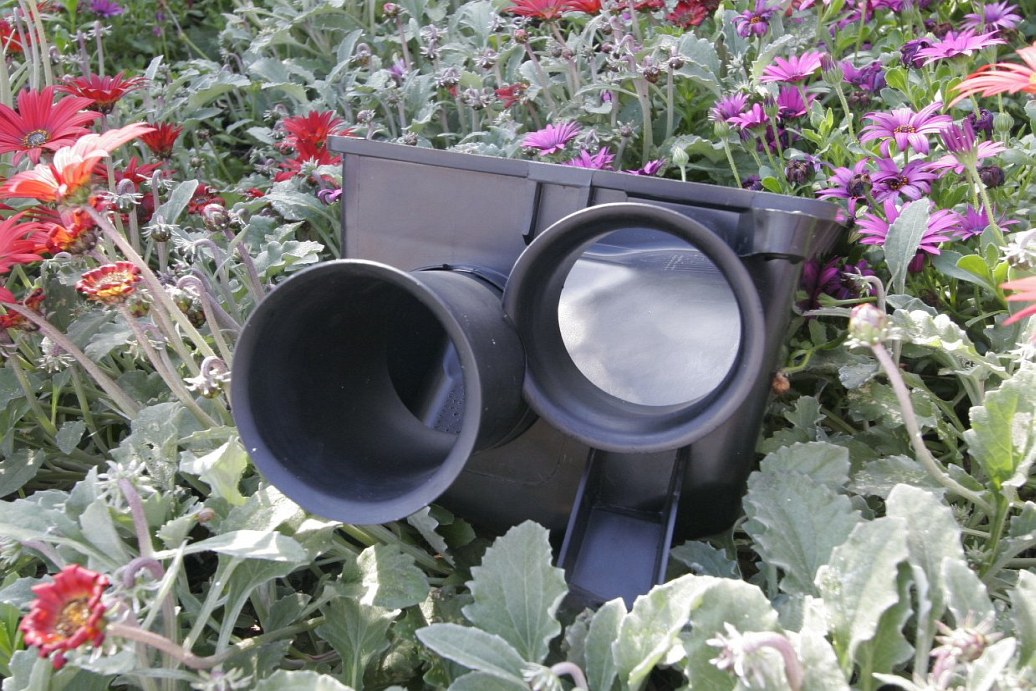
This is what the finished box looks like. † Pretty nice, even if I do say so myself.

Here you can see the ďblue glueĒ, just enough to hold it while still allowing me to remove it if needed.

One last shot showing the difference in length.
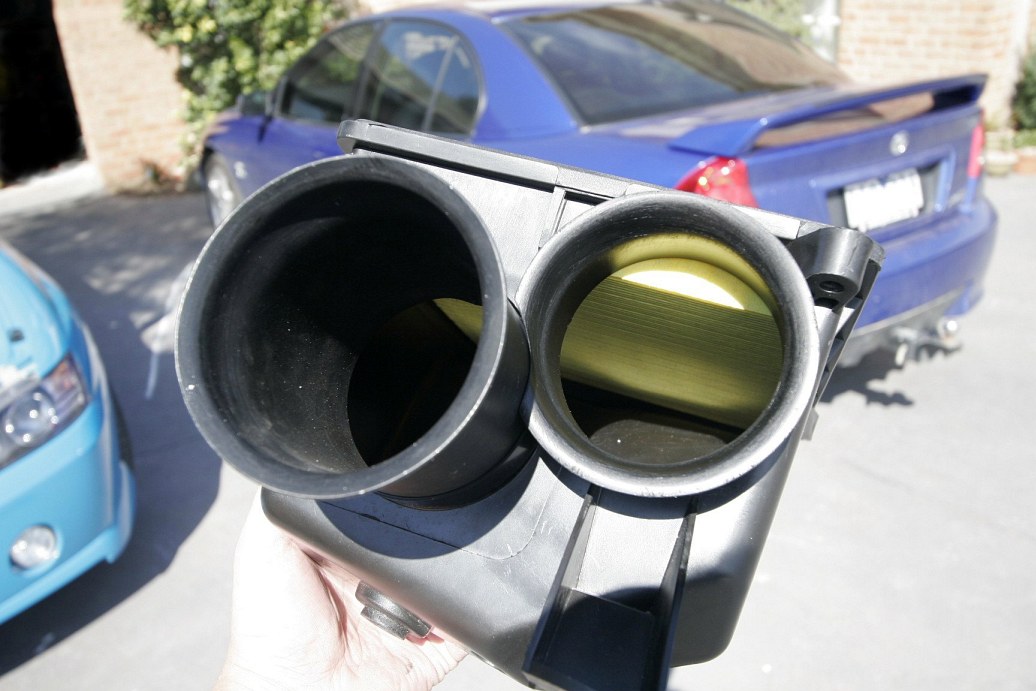
And this shows how the filter fits behind the new tube. † Thereís just enough clearance so that the filter does not touch the back of the tube.

All nice and snug.† Nothing in the way and nothing touching. To re fit the box, just put the rubber grommets in their holes and press it back in place.

And once itís all put back together. † Still looks kind of stock and once the radiator cover is on you wouldnít be able to tell itís been changed.

And thatís it. All in place and looking good. The last thing to do is take the car for a test drive.
Itís much louder, if sound is anything to go by, itís made a huge difference.† But sound isnít always a good test and I donít have a dyno handy.† The first time I really stuck the boot in though, there was a funny response.† The car picked normally until it got to about 3500 RPM, then it was like the engine had VVT. † It certainly picked up faster from 3500 to around 5000 and it wasnĎt just the feeling of being pressed back in the seat.† I saw the tacho pick up faster from 3500.
I canít say that the addition of the hole cause the boost, but it does feel stronger up top.† Itís all subjective though, but it is much louder at WOT and itís now ready for the next round of mods.